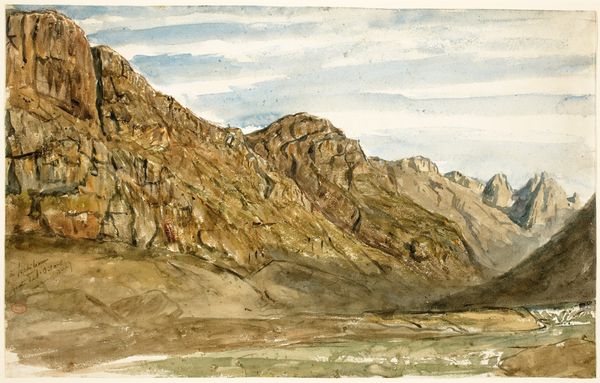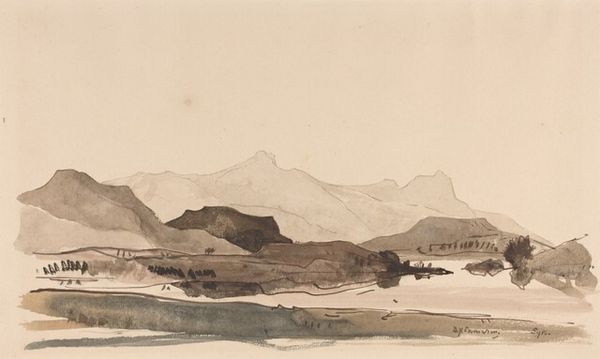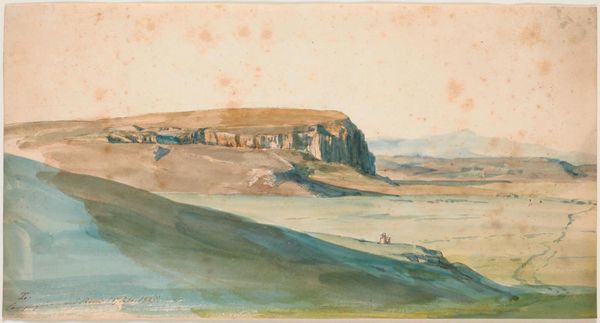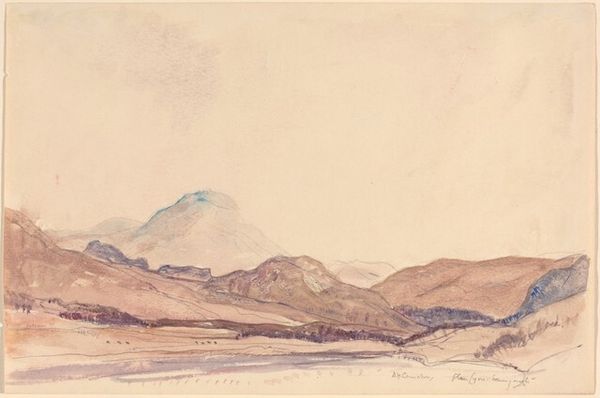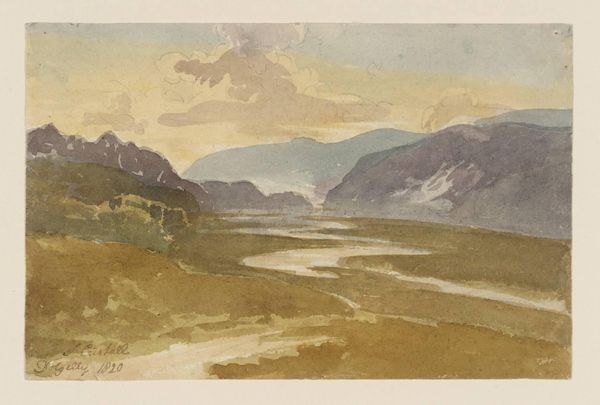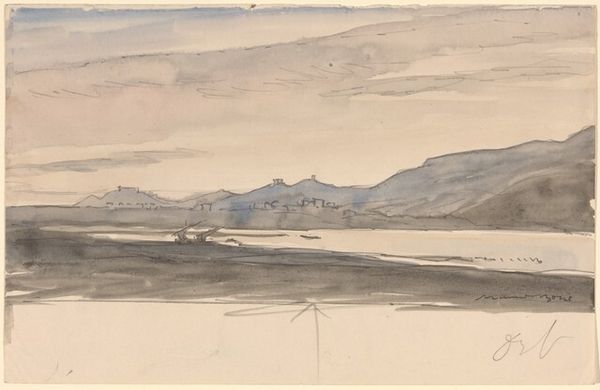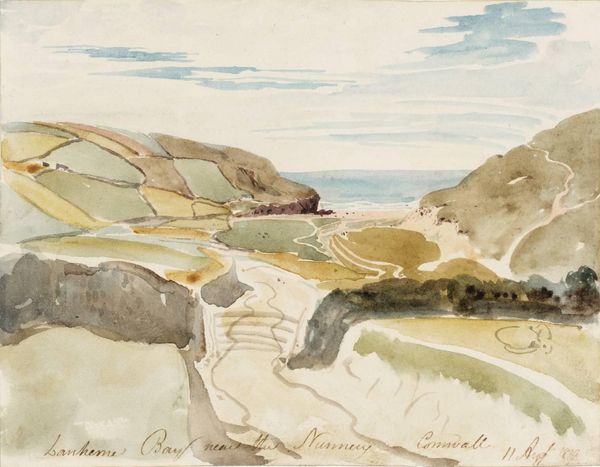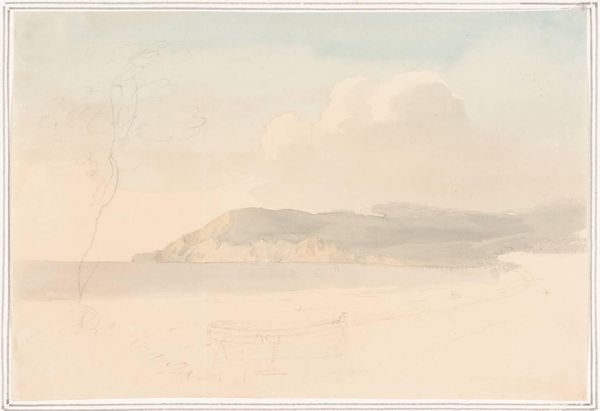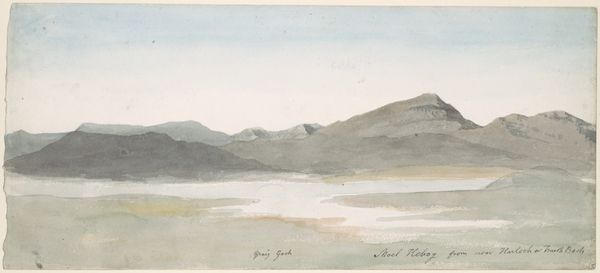
Dimensions: support: 127 x 206 mm
Copyright: CC-BY-NC-ND 4.0 DEED, Photo: Tate
Curator: This is William James Müller's watercolor, "Near Wallenstadt," likely created around 1834, now residing in the Tate Collections. Its dimensions are relatively modest, only about 127 by 206 millimeters. Editor: My first thought? Serene, almost dreamlike. The washes of color create a sense of stillness and vastness, like a memory of a landscape rather than its precise record. Curator: Müller was known for his landscape painting, often capturing scenes from his travels. This work reflects a broader 19th-century artistic interest in sublime natural landscapes. Editor: I'm drawn to how he suggests form with such economy. The layers of hills fade into the distance, each rendered with just a few strokes. It invites the viewer to fill in the details. Curator: Absolutely. It’s interesting to consider how images like these contributed to the romantic idealization of the Swiss landscape. Editor: It makes me want to visit! There is a lightness, a sense of being caught in that perfect moment... It's simple, but deeply evocative. Curator: Indeed, and hopefully our discussion has helped to highlight how a small watercolor can speak volumes about its historical context and timeless artistic appeal. Editor: Yes, I'm definitely leaving with a new appreciation for landscape art and its power.
